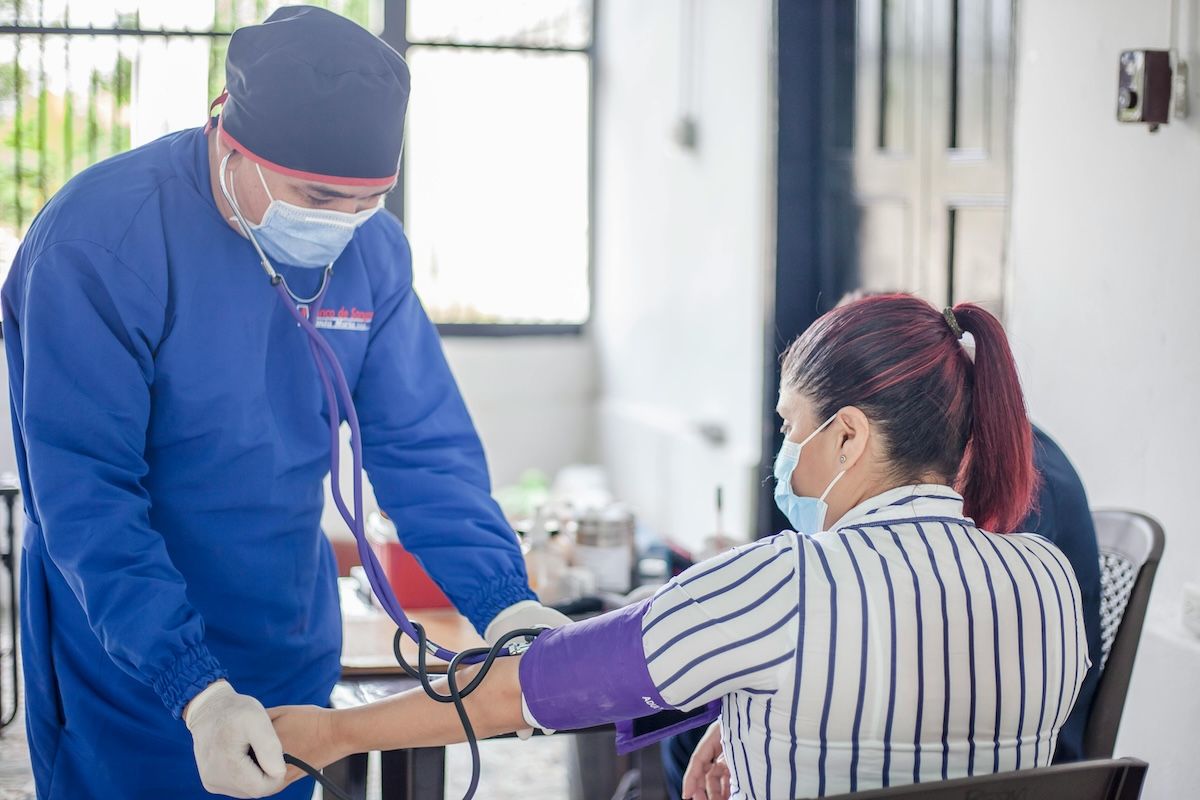Best Direct-Entry Nurse Practitioner Programs for 2026
Pursuing the path to becoming a nurse practitioner can be time-consuming. Finding the right direct-entry program can feel overwhelming for students without a nursing background. These programs are designed to help students with a bachelor’s degree in another field quickly transition into advanced nursing roles. As healthcare grows, planning to enter the field faster is key.
Data from 2024 showed a 35.5% increase in nurse practitioners in the U.S. over the past five years. This rise reflects a growing demand for skilled professionals in the field. Choosing the right direct-entry nurse practitioner programs can put students on a fast track to a rewarding career. This article will highlight the best options for 2026, helping readers save time and make an informed decision.
What are the benefits of getting a direct-entry nurse practitioner degree?
- A direct-entry nurse practitioner degree opens doors to specialized roles in hospitals, clinics, and private practices.
- Many direct-entry nurse practitioner programs offer online coursework, enabling students to gain advanced skills while completing clinical training in their communities.
- Nurse practitioners can earn starting salaries averaging $164,000, and they may be able to earn even higher pay in specialized roles.
What can I expect from a direct-entry nurse practitioner program?
A direct-entry nurse practitioner program offers a structured path for non-nursing degree holders to transition into advanced nursing. These programs combine foundational nursing education with specialized coursework for nurse practitioners.
The core curriculum often includes pathophysiology, pharmacology, and advanced health assessment. Students also take courses focused on patient care, ethics, and leadership. Common projects may include clinical simulations, capstone projects, and research-based assignments that tackle real-world healthcare challenges. These hands-on experiences prepare students for clinical practice and problem-solving in diverse settings.
The cost of these programs varies but typically ranges from $900 to $1,500 per credit hour. With most programs requiring 60–80 credit hours, the total tuition can add up. Many schools offer financial aid or scholarships to ease the financial burden.
Program length depends on whether students enroll full-time or part-time. On average, full-time students can complete a program in 2–4 years. Part-time options may take up to 4 years, offering flexibility for those balancing work and school.
Where can I work with a direct-entry nurse practitioner degree?
NPs are in high demand across several industries. These industries offer a variety of job roles focused on patient care and healthcare leadership. These roles include family nurse practitioners, acute care NPs, and psychiatric mental health NPs. Each offers opportunities to impact patients’ lives while advancing healthcare practices directly.
Here are the top industries with the highest employment for NPs, based on data from the BLS in 2024:
- Offices of Physicians: These settings employ approximately 137,030 NPs. Roles typically include diagnosing and treating patients, managing chronic conditions, and collaborating with physicians.
- General Medical and Surgical Hospitals: Around 61,740 NPs work in hospitals. They provide inpatient care, assist in surgeries, and lead patient recovery plans.
- Outpatient Care Centers: These facilities employ 25,440 NPs and focus on same-day care, including specialty clinics and urgent care services.
- Offices of Other Health Practitioners: With 11,400 positions, NPs often work in specialized dermatology or mental health practices.
- Home Health Care Services: About 7,410 NPs support patients at home, often focusing on elderly or chronically ill individuals.
How much can I make with a direct-entry nurse practitioner degree?
According to 2024 data, the average starting salary for new NPs is approximately $164,000, an 8.6% increase from the previous year’s $152,000. Salary salaries can reach $310,000 annually for those in specialized or high-demand roles. Meanwhile, data from the BLS shows that the median annual salary for NPs is $126,260. This figure reflects what many NPs earn across various experience levels and industries.
Earnings can vary depending on factors like location, specialization, and industry. For instance, NPs working in outpatient care centers or home healthcare services may earn differently than those employed in hospitals or private practices. Advanced roles, such as acute care or psychiatric mental health nurse practitioners, often come with higher salaries due to the specialized skills required.
Table of Contents
- List of the Best Direct-Entry Nurse Practitioner Programs for 2026
- How long does it take to complete a direct-entry nurse practitioner program?
- How does an online direct-entry nurse practitioner program compare to an on-campus program?
- What is the average cost of direct-entry nurse practitioner programs?
- What are the financial aid options for students enrolling in a direct-entry nurse practitioner program?
- What are the prerequisites for enrolling in a direct-entry nurse practitioner program?
- What are the certification and licensure requirements after completing a direct-entry nurse practitioner program?
- How do direct-entry nurse practitioner programs perform in board exam pass rates and clinical outcomes?
- What accreditation standards should I consider for direct-entry nurse practitioner programs?
- What courses are typically in a direct-entry nurse practitioner program?
- How are clinical training experiences optimized in direct-entry nurse practitioner programs?
- How does technology enhance clinical training in direct-entry nurse practitioner programs?
- Is a direct-entry nurse practitioner degree a sound financial investment?
- How competitive are direct-entry nurse practitioner programs?
- How do faculty qualifications impact direct-entry nurse practitioner program quality?
- What types of specializations are available in direct-entry nurse practitioner programs?
- How to choose the best direct-entry nurse practitioner program?
- What career paths are available for graduates of direct-entry nurse practitioner programs?
- What challenges do students face in direct-entry nurse practitioner programs?
- How can accelerated online tracks enhance my career prospects as a direct-entry nurse practitioner?
- What is the job market for graduates with a direct-entry nurse practitioner degree?
- Other Things You Should Know About Direct-Entry Nurse Practitioner Programs
How do we rank our schools?
We know investing in your education is a big decision. That’s why we provide transparent information to help you make informed decisions. Our rankings rely on trusted sources like the IPEDS database, Peterson’s database, the College Scorecard database, and the National Center for Education Statistics. These reliable resources ensure we rank the best direct-entry nurse practitioner programs accurately. To learn more about our process, visit the methodology page on Research.com.
List of the Best Direct-Entry Nurse Practitioner Programs for 2026
1. University of Cincinnati
The University of Cincinnati offers an accelerated Direct-Entry MSN program, perfect for individuals with a non-nursing bachelor's degree. In just five semesters, students earn an MSN, become RNs, and gain the necessary skills to pursue a career as a nurse practitioner. The program offers a unique opportunity for interdisciplinary collaboration within the region's only Academic Health Center, with clinical experiences at top healthcare facilities, including a trauma center and a pediatric hospital.
- Required Credits to Graduate: 64
- Tracks/Concentrations: Adult-Gerontology Acute Care Nurse Practitioner (AGACNP), Adult-Gerontology Primary Care Nurse Practitioner (AGPCNP), Women's Health Nurse Practitioner (WHNP), Family Nurse Practitioner (FNP), Neonatal Nurse Practitioner
- Cost: $836 per credit for OH residents, $861 per credit for Metro residents, $1,423 per credit for non-residents
- Accreditation: Commission on Collegiate Nursing Education (CCNE)
2. University of Pennsylvania
The University of Pennsylvania provides an accelerated Master of Professional Nursing (MPN) program for non-nurses. In just 15 months, students can earn their RN license and begin making a difference in healthcare. Focusing on health equity and interprofessional collaboration, this program prepares graduates to deliver high-quality care and advocate for better healthcare policies. Students can also opt for a Master of Science in Nursing (MSN) through the MPN/MSN option, with 10 specialty tracks available.
- Required Credits to Graduate: 21
- Tracks/Concentrations: AGACNP, AGPCNP, Neonatal Nurse Practitioner, Women’s Health/Gender-Related Nurse Practitioner, Pediatric Acute Care Nurse Practitioner (PNP-AC), FNP, Pediatric Primary Care Nurse Practitioner (PNP), Psychiatric-Mental Health Nurse Practitioner (PMHNP), Nurse Midwifery, Nursing and Healthcare Leadership
- Cost: $142,749 in total
- Accreditation: CCNE
3. Marquette University
Marquette University's Direct Entry MSN program helps non-nurses transition into nursing in as few as five semesters. The program offers in-person and online learning options at two Wisconsin locations. Students gain hands-on experience through high-fidelity simulation and clinical practice at top healthcare facilities. Upon completion, graduates are well-prepared to pass the NCLEX-RN exam and pursue various career opportunities in nursing.
- Required Credits to Graduate: 75
- Tracks/Concentrations: NP, Nursing Administration, Nurse Midwifery
- Cost: $67,000 in total
- Accreditation: CCNE
4. Yale University
Yale University's Graduate Entry Pre-Specialty in Nursing (GEPN) program is designed for non-nursing students. This three-year program provides foundational nursing education and advanced practice training in a specialty area. Students engage in a blend of clinical experiences across diverse settings, balancing the science and art of nursing. Graduates are prepared to pursue leadership roles or further education, including post-master's certificates or doctoral programs.
- Required Credits to Graduate: 45
- Tracks/Concentrations: AGACNP, AGPCNP, FNP, Nurse Midwifery, PNP-AC, PNP, PMHNP, WHNP
- Cost: $69,831 in total
- Accreditation: CCNE
5. Simmons University
Simmons University offers a direct-entry MSN program that enables students from diverse academic backgrounds to pursue a career as FNPs. The program combines nursing education with hands-on clinical experience at renowned Boston hospitals. Upon completion, graduates are prepared to take the FNP national board certification exam and enter various healthcare roles, from primary care to research positions.
- Required Credits to Graduate: 96
- Tracks/Concentrations: FNP
- Cost: $1,559 per credit for pre-licensure, $1,235 per credit for post-licensure
- Accreditation: CCNE
6. Vanderbilt University
Vanderbilt University's accelerated MN program is ideal for students with a non-nursing background who want to become registered nurses. In four semesters, students earn an RN license and gain the skills to deliver comprehensive patient care. The program focuses on health equity and justice, emphasizing clinical practice and 1,200 hours of hands-on experience. Graduates are prepared to advance to a specialty through a Post-Master's Certificate or DNP.
- Required Credits to Graduate: 66
- Tracks/Concentrations: AGPCNP, FNP, Nurse Midwifery, PNP, PMHNP, WHNP, Gender-Related NP
- Cost: $1,997 per credit
- Accreditation: CCNE
7. Northeastern University
Northeastern University's direct-entry nursing program offers a unique pathway for non-nurses to earn both a BSN and an MSN. Students start by completing RN prelicensure courses, followed by clinical practice and specialization in an advanced nursing field. The program offers extensive experiential learning through co-op, student research, and global opportunities, preparing students to work across diverse healthcare settings and impact patient care globally.
- Required Credits to Graduate: 36 to 42
- Tracks/Concentrations: FNP, AGACNP, Neonatal Nurse Practitioner, PNP, PMHNP
- Cost: $22,510 per semester
- Accreditation: CCNE
8. The Ohio State University
Ohio State's Graduate Entry MSN program allows students with non-nursing bachelor's degrees to earn their MSN in approximately three years. The program provides an advanced practice nursing education, combining coursework and clinical experiences. Students select their specialty at the start and take the NCLEX-RN midway through the program. Graduates are prepared for roles in hospitals, clinics, and other healthcare settings, focusing on collaborative care and leadership.
- Required Credits to Graduate: 96 to 116
- Tracks/Concentrations: AGPCNP, PNP, FNP, PMHNP, Nurse Midwifery, WHNP, Neonatal Nurse Practitioner
- Cost: $9,682 per semester for Ohio residents, $22,982 for non-residents
- Accreditation: CCNE
9. University of Rochester
The University of Rochester offers an accelerated MN program for those looking to fast-track their nursing careers. Students first complete a 12-month accelerated BSN program, followed by an NP specialty. The program emphasizes hands-on clinical experience, preparing students to sit for the NCLEX-RN exam. Graduates emerge as master' s-prepared nurse practitioners ready to serve in diverse healthcare settings.
- Required Credits to Graduate: 70.5
- Tracks/Concentrations: AGACNP, AGPCNP, FNP, PMHNP, PNP
- Cost: $109,600 in total
- Accreditation: CCNE
10. University of Vermont
The University of Vermont provides a direct-entry MSN program that accelerates non-nurses into a nursing career. The program includes a year of full-time, on-site coursework to prepare students for the NCLEX-RN exam. After earning their RN license, students can pursue an online MSN degree. This program allows students to advance their education while working as registered nurses, combining on-site and online learning for maximum flexibility.
- Required Credits to Graduate: 72.5 to 75.25
- Tracks/Concentrations: Business Leadership, Education, Integrative Health and Wellness, Public Health, Trauma-Informed Care
- Cost: $678 per credit for Vermont residents, $1,200 per credit for non-residents
- Accreditation: CCNE
Here’s What Graduates Have to Say About Their Direct-Entry Nurse Practitioner Programs
I was nervous about starting with no nursing background, but the program gave me everything I needed. The mix of classroom learning and clinical hours made me feel confident in my skills. Now I'm in a job where I make a difference every day. – Priya
Balancing school with my family life seemed impossible at first, but the program's structure really worked for me. The professors were supportive and pushed me to succeed, and now I have a career I love. – Daniel
This program felt like the fastest path to my dream of becoming a nurse practitioner. I appreciated how the coursework and hands-on experience were designed to build on each other. Every step felt purposeful, and it paid off. – Elena
Key Findings
- Direct-entry nurse practitioner programs typically take 2-4 years to complete, depending on the program and specialization.
- Tuition ranges from $30,000 to $100,000, with online options often more affordable.
- Graduates with an NP degree earn a median annual salary of $124,680.
- Nurse practitioner roles are expected to grow by 46% from 2023 to 2033, creating approximately 135,500 new jobs.
- Most programs require students to complete between 40 to 70 credits, depending on the degree level.
- Typical prerequisites include science courses, a bachelor's degree (not necessarily in nursing), and a minimum 3.0 GPA.
How long does it take to complete a direct-entry nurse practitioner program?
Nurses who have a bachelor's degree in nursing can become a nurse practitioner by pursuing a BSN to NP program, which takes two years on average. But what about non-nurses? Do they need to spend four years earning a BSN first before they can proceed to enroll in a master's in nursing program? Not anymore. Thanks to direct-entry MSN programs, people who have a non-nursing bachelor's degree no longer have to spend at least six years to become NPs.
Most direct-entry nurse practitioner programs take 2 to 4 years to complete, depending on the program structure and whether you study full-time or part-time. For students without a nursing background, the initial phase often includes a year of accelerated coursework to meet RN requirements. Afterward, the nurse practitioner portion typically takes 1.5 to 3 years.
Choosing a full-time program is usually the quickest way to become a nurse and advance to a nurse practitioner role. However, flexible options like part-time tracks can extend the timeline but offer more balance for those working or managing other responsibilities. Remember that clinical hours and state requirements may also impact your completion time.

How does an online direct-entry nurse practitioner program compare to an on-campus program?
Online direct-entry nurse practitioner programs and on-campus programs have key differences, but both lead to the same qualifications. Here’s a comparison:
- Flexibility: Online programs often offer more flexible schedules, making them ideal for students who work or have family responsibilities. On-campus programs usually require a fixed schedule with in-person attendance.
- Learning Style: Online programs rely on virtual classes, recorded lectures, and digital resources, which work well for independent learners. On-campus programs provide face-to-face interactions, which some students find more engaging.
- Clinical Rotations: Both formats require clinical hours, but online programs may allow students to arrange rotations closer to home. In contrast, on-campus programs might assign local placements.
- Cost: Online programs often reduce costs by eliminating commuting and housing expenses, but tuition fees are generally similar for both options.
If you value flexibility and convenience, an online program is the easiest nurse practitioner program for you. However, on-campus programs might be better if you prefer in-person support. Both paths can effectively prepare you for your career as a nurse practitioner.
What is the average cost of direct-entry nurse practitioner programs?
The cost of direct-entry nurse practitioner programs varies depending on the school and format. The average tuition typically ranges from $60,000 to $120,000 for the entire program.
Here’s a breakdown of potential expenses:
- Tuition Fees: Public universities charge around $500 to $1,000 per credit, while private schools may charge up to $2,000 per credit. Programs usually require 60 to 75 credits.
- Additional Costs: Students may need to budget for clinical fees, books, supplies, and technology, which can add $5,000 to $10,000.
- Living Expenses: On-campus programs may involve housing and commuting costs, while online programs save on these but might include travel costs for clinical placements.
The chart below lists the highest-paying states for nurse practitioners, as reported by the BLS in 2024.
What are the financial aid options for students enrolling in a direct-entry nurse practitioner program?
Financial aid options for students in direct-entry nurse practitioner programs include federal loans, grants, scholarships, and employer support. Here are some key opportunities:
- Federal Financial Aid: Complete the Free Application for Federal Student Aid (FAFSA) to qualify for loans, work-study programs, and grants like the Pell Grant for eligible students.
- Scholarships: Many organizations, such as the American Association of Nurse Practitioners (AANP) Foundation and the Health Resources & Services Administration (HRSA) Nurse Corps Scholarship Program, offer scholarships for nursing students. These can cover tuition, books, and other expenses.
- Loan Repayment Programs: After graduation, you may qualify for programs like the HRSA Nurse Corps Loan Repayment Program, which repays a portion of your loans in exchange for working in underserved areas.
- State-Specific Grants: Some states provide funding to residents pursuing advanced nursing degrees. Check with your state’s Department of Education or nursing board for options.
- Employer Tuition Assistance: If you’re already working in healthcare, ask your employer if they offer tuition reimbursement or assistance programs to support further education.
What are the prerequisites for enrolling in a direct-entry nurse practitioner program?
The prerequisites for enrolling in the best direct entry NP programs for non nurses vary, but they typically include:
- Bachelor’s Degree: You need a bachelor’s degree in a non-nursing field. Some programs accept applicants with healthcare-related backgrounds, but this isn’t always required.
- GPA Requirement: Most programs require a minimum GPA, usually around 3.0 on a 4.0 scale. Competitive programs may expect a higher GPA.
- Prerequisite Courses: Before starting the program, you should complete foundational courses like anatomy, physiology, microbiology, and statistics. These classes ensure you have the science background needed for advanced nursing topics.
- Letters of Recommendation: Programs often ask for 2-3 letters from academic or professional references who can speak to your skills, work ethic, and potential as a nurse practitioner.
- Personal Statement: A well-written personal statement explaining your interest in nursing, your career goals, and why you chose a direct-entry program is commonly required.
- Experience (Optional): While not mandatory for all programs, having volunteer or work experience in healthcare can strengthen your application.
Check out the easiest accelerated nursing programs to get into and take your pick.

What are the certification and licensure requirements after completing a direct-entry nurse practitioner program?
Graduates must secure RN licensure prior to pursuing advanced practice certification. After completing the direct-entry program, candidates must pass the NCLEX-RN and then qualify for national certification through agencies such as the American Association of Nurse Practitioners or the American Nurses Credentialing Center, depending on their chosen specialization. Requirements often include a specified number of supervised clinical hours, evidence of academic proficiency, and adherence to state-specific regulations. Maintaining licensure typically involves periodic renewal and continuing education credits. For comparative financial insights related to entry-level roles, refer to the BSN nurse salary.
How do direct-entry nurse practitioner programs perform in board exam pass rates and clinical outcomes?
Direct-entry nurse practitioner programs are increasingly evaluated through measurable outcomes such as board exam pass rates, licensure success, and clinical placement performance. Evaluating these metrics provides insights into a program’s curriculum rigor and the effectiveness of its clinical training. Schools with consistently high certification success often offer robust student support systems, evidence-based teaching methods, and quality clinical partnerships. Prospective students should review published statistics and graduate surveys to compare program performance and make informed choices. For additional career perspectives and insights on roles with lower occupational stress, please explore the least stressful nursing specialties.
What accreditation standards should I consider for direct-entry nurse practitioner programs?
Selecting a program with recognized accreditation ensures that the curriculum, clinical partnerships, and faculty meet national quality benchmarks, which can be pivotal for licensure and long-term career advancement. Verify that the program holds accreditation from reputable bodies such as the Commission on Collegiate Nursing Education or the Accreditation Commission for Education in Nursing. Evaluating these standards provides assurance that the institution adheres to rigorous academic and clinical training requirements. Prospective students should review current outcomes and compliance records to confirm the program’s commitment to educational excellence. For instance, accelerated options like the 3-semester DNP program serve as examples of programs integrating strict quality assurance with streamlined pathways.
What courses are typically in a direct-entry nurse practitioner program?
Direct-entry nurse practitioner programs cover a mix of foundational nursing courses and advanced topics in specialized care. Each program may include specialized courses depending on the nurse practitioner track, such as women’s health, mental health, or geriatrics. These courses prepare students to deliver advanced, patient-centered care in various healthcare settings. These are some typical courses you’ll find in the curriculum:
- Foundations of Nursing: Introduces essential nursing practices, including patient care and basic clinical skills.
- Pharmacology: Focuses on how medications work, their effects, and safe administration.
- Health Assessment: Teaches how to perform physical exams, take medical histories, and assess patient needs.
- Pathophysiology: Explores how diseases affect the body, preparing students for diagnosis and treatment planning.
- Evidence-Based Practice: Covers research methods and how to apply scientific evidence to improve patient outcomes.
- Pediatrics and Family Care: Focuses on treating children and managing family health, a key area for nurse practitioners.
- Primary Care Management: Teaches skills for diagnosing and managing common health conditions in primary care settings.
- Clinical Practicums: Hands-on training in healthcare facilities, where students apply classroom knowledge to real-life patient care.
f
Direct-entry programs employ a multifaceted approach to clinical training by integrating high-fidelity simulation labs with structured hospital rotations. Institutions collaborate with healthcare partners to provide diverse patient interactions and case-based learning scenarios that sharpen clinical decision-making and foster interprofessional teamwork. Innovative practices such as telehealth shadowing and simulation-driven emergency response drills further refine graduates' readiness for real-world challenges. Additionally, many programs offer accelerated tracks—such as the 12-month FNP program online—that balance rigorous theoretical coursework with intensive, hands-on practical experiences while maintaining robust performance evaluations.
How does technology enhance clinical training in direct-entry nurse practitioner programs?
Direct-entry nurse practitioner programs are increasingly integrating advanced technologies into their curricula to bridge the gap between theory and practice. These innovations include high-fidelity simulation labs, interactive telehealth modules, and digital clinical scenarios that mimic real-world patient cases. Such tools enable precise skills assessment and rapid feedback in a controlled environment, significantly improving clinical decision-making and patient care readiness. Additionally, blended learning approaches combine in-person rotations with virtual simulations to foster adaptability in diverse healthcare settings. For insights into how technological integration can align with affordability and accessibility, compare options covered in our guide on the cheapest RN to BSN program online.
Is a direct-entry nurse practitioner degree a sound financial investment?
A direct-entry nurse practitioner degree offers long-term financial benefits that extend well beyond the upfront tuition costs. Graduates typically secure competitive salaries early in their careers, accelerating the recovery of their educational investment. In addition, enhanced career advancement opportunities and leadership roles contribute to a strong return on investment over time. Prospective students are encouraged to evaluate tuition expenses, available financial aid options, and program duration when assessing overall cost-effectiveness. For example, exploring alternatives such as cheapest AGNP programs can help ensure a balanced decision aligned with both career ambitions and financial goals.
How competitive are direct-entry nurse practitioner programs?
Direct-entry nurse practitioner programs exhibit a spectrum of admissions competitiveness. Some leading institutions enforce rigorous academic metrics and extensive clinical prerequisites, whereas others employ a holistic review process that values diverse professional backgrounds and soft skills alongside quantitative measures. Applicants are encouraged to evaluate each program’s selectivity based on their academic record and experience. In certain cases, institutions with more accessible admission criteria—such as those highlighted in our guide on the easiest nursing schools to get into in California—offer viable pathways for candidates seeking quality education alongside realistic entry standards.
How do faculty qualifications impact direct-entry nurse practitioner program quality?
Highly qualified faculty with active clinical and research experience ensure that the curriculum remains both current and rigorous. Their advanced credentials and practical insights foster critical thinking, facilitate skill development through mentorship, and enhance student preparedness for real-world challenges. Institutions that prioritize experienced educators also often offer innovative learning methods, including access to cheap FNP programs online, which can further improve program value and affordability.
What types of specializations are available in direct-entry nurse practitioner programs?
Direct-entry nurse practitioner programs offer a range of specializations to prepare students for focused patient care areas. Specializations allow students to tailor their education to their interests and career goals, increasing their expertise in specific patient populations or healthcare settings. Each track includes targeted coursework and clinical training to build the necessary skills for these roles. Some standard options include:
- Family Nurse Practitioner (FNP): Covers care for patients of all ages, focusing on primary and preventive care. This is a popular choice for students transitioning from RN to FNP programs.
- Pediatric Nurse Practitioner (PNP): Specializes in caring for children, from infants to adolescents, in both primary and acute care settings.
- Adult-Gerontology Nurse Practitioner (AGNP): One of the highest paid NP specialists, AGNPs focus on caring for adults and aging populations, including chronic disease management and end-of-life care.
- Women’s Health Nurse Practitioner (WHNP): Concentrates on reproductive and gynecological health and prenatal and postpartum care.
- Psychiatric-Mental Health Nurse Practitioner (PMHNP): Prepares students to address mental health disorders, including therapy and medication management.
- Acute Care Nurse Practitioner (ACNP): Trains students to handle critically ill patients in fast-paced environments like ICUs and emergency departments.
- Neonatal Nurse Practitioner (NNP): Focuses on the care of premature or critically ill newborns, making it ideal for those passionate about neonatal care.
The chart below illustrates the growth of the nursing workforce over the past five years, as reported by the HRSA in 2024.
How to choose the best direct-entry nurse practitioner program?
Choosing the best direct-entry nurse practitioner program depends on your goals, schedule, and financial situation. Here are key factors to consider:
- Accreditation: Start by ensuring that the program is offered by regionally accredited online universities or institutions. Look for programs accredited by bodies like the CCNE or ACEN that confirm academic rigor and clinical readiness.
- Program Format: Choose between an online, hybrid, or on-campus structure. Online programs offer flexibility, while hybrid options balance virtual learning with hands-on training.
- Specializations: Choose a program that offers your desired focus, such as family practice or mental health.
- Clinical Placements: Ensure the program provides strong clinical partnerships near your location for hands-on experience.
- Cost: Compare tuition rates and financial aid options, such as scholarships, grants, or employer assistance.
- Duration: Choose a program that fits your timeline. Some programs offer accelerated paths, while others allow part-time study.
- Student Support: Find resources like academic advising, mentorship, and career counseling to help you succeed.
What career paths are available for graduates of direct-entry nurse practitioner programs?
Graduates of direct-entry nurse practitioner programs can explore a wide range of career paths in healthcare. These roles focus on specialized patient care, leadership, and public health initiatives. These career options let graduates tailor their work to their passions while addressing critical healthcare needs. Here are some standard career options:
- Family Nurse Practitioner (FNP): Work in clinics or private practices to provide primary care for patients of all ages.
- Acute Care Nurse Practitioner: Deliver advanced care in hospitals and emergency settings, focusing on critically ill patients.
- Mental Health Nurse Practitioner: Specializes in psychiatric care, offering therapy and medication management for mental health disorders.
- Pediatric Nurse Practitioner: Provides medical care to infants, children, and adolescents in clinics or hospitals.
- Women’s Health Nurse Practitioner: Focuses on reproductive and gynecological health, often in OB/GYN offices or community clinics.
- Public Health Roles: Combine clinical expertise with broader health initiatives. Pairing this path with affordable online MPH programs can open opportunities in public health policy or epidemiology.
- Academic or Research Roles: Teach future nurses or conduct research on healthcare advancements.

What challenges do students face in direct-entry nurse practitioner programs?
Students transitioning from non-nursing backgrounds often encounter intensive academic demands and rapid immersion into clinical practice. They may face difficulties adapting theoretical concepts to real-world patient care, managing high-pressure clinical simulations, and refining hands-on skills during limited practice sessions. The accelerated pace of these programs can further challenge time management and stress resilience. Institutions increasingly offer targeted academic support, mentoring, and simulation-based training to ease these transitions. For flexible options addressing similar challenges, consider direct-entry MSN programs for non-nurses online.
How can accelerated online tracks enhance my career prospects as a direct-entry nurse practitioner?
Accelerated online tracks offer a dynamic pathway by integrating flexible, technology-driven coursework with focused clinical training. These programs facilitate rapid skill acquisition and provide exposure to innovative simulation tools and virtual patient encounters that mirror real-world scenarios. They also enable tailored specialization in high-demand areas, thereby creating opportunities for niche career advancement. For example, candidates can consider options like fast track MSN women's health nurse practitioner online programs to refine their expertise and meet specific industry needs.
What is the job market for graduates with a direct-entry nurse practitioner degree?
According to 2024 data from the Bureau of Labor Statistics (BLS), nurse practitioner roles are projected to grow 46% from 2023 to 2033. This rapid growth will create around 135,500 new job openings, driven by the increasing demand for advanced healthcare professionals in various settings.
Nurse practitioners are needed in primary care clinics, hospitals, outpatient centers, and even telehealth roles. The growing focus on preventative care and managing chronic conditions also expands opportunities. Additionally, rural and underserved areas particularly need these professionals, offering competitive incentives to fill critical gaps.
Graduates from direct-entry nurse practitioner programs are well-positioned to meet this demand. They benefit from job stability, high salaries, and diverse career options. This booming market ensures that their skills remain valuable and sought after across the healthcare industry.
Other Things You Should Know About Direct-Entry Nurse Practitioner Programs
What is the easiest NP program to get into?
Direct-entry nurse practitioner programs with lower GPA requirements and no GRE often rank as the easiest NP programs to enter. Online options from regionally accredited universities also simplify admissions. These programs cater to career changers or students with non-nursing backgrounds. For students seeking the easiest nurse practitioner program, focusing on schools offering holistic admissions reviews and flexible prerequisites can make the process more accessible.
What are the hardest NP programs to get into?
The hardest NP programs to enter are often competitive direct-entry nurse practitioner programs at top-ranked universities. These programs typically require a high GPA, strong healthcare experience, and rigorous GRE scores. Specializations like acute care or psychiatric nurse practitioner tracks can make admission tougher. Applicants should prepare thoroughly and meet all prerequisites for these elite programs.
Which country is best for nurse practitioner?
The United States leads globally for nurse practitioner programs and career opportunities. Direct-entry nurse practitioner programs are widely available and offer excellent training and specialization options. Other top countries include Canada and Australia, known for their high-quality NP education and growing healthcare markets. For international students, affordability and licensing requirements should factor into their decision.
Are there dual-degree options, such as RN to FNP and DNP tracks?
Yes, some direct-entry nurse practitioner programs offer dual-degree options, like RN to FNP and DNP tracks. These pathways let students earn an advanced degree while specializing in family practice. Dual-degree programs are ideal for those pursuing leadership roles or advanced clinical expertise. Students should prioritize programs offered by regionally accredited online universities for maximum flexibility.
References:
- American Association of Colleges of Nursing (AACN). (2024). Nursing Workforce Fact Sheet. AACN.
- AMN Healthcare. (2024). Nurse Practitioner Salary Report 2024. AMN Healthcare.
- Bureau of Labor Statistics (BLS). (2024a). 29-1171 Nurse Practitioners. Occupational Employment and Wages. BLS.
- Bureau of Labor Statistics (BLS). (2024b). Nurse Anesthetists, Nurse Midwives, and Nurse Practitioners. Occupational Outlook Handbook. BLS.
- Health Resources and Services Administration (HRSA). (2024). State of the U.S. Health Care Workforce, 2024. HRSA.
- Zippia. (2024). Nurse Practitioner Education Requirements. Zippia.


































